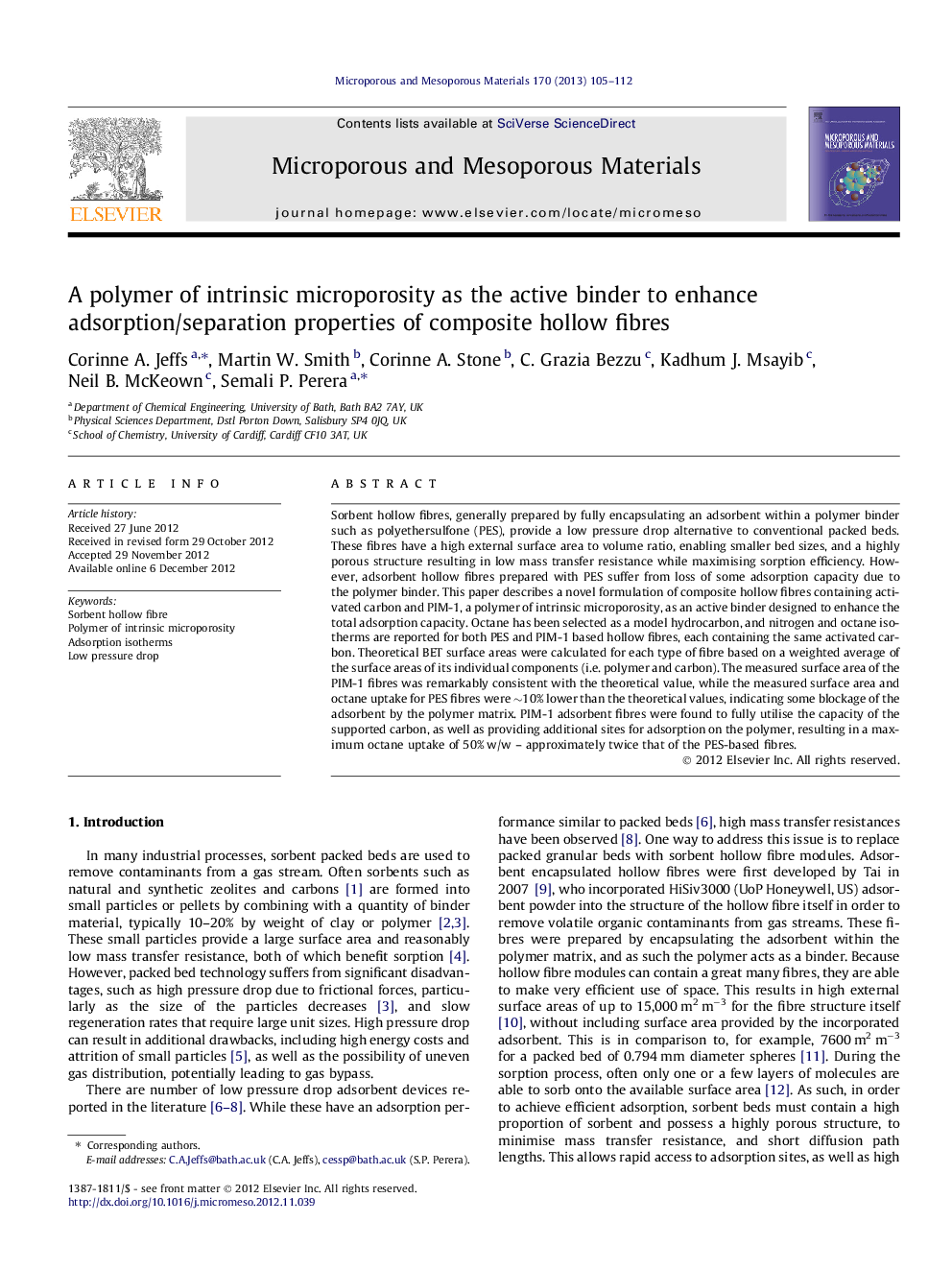| Article ID | Journal | Published Year | Pages | File Type |
|---|---|---|---|---|
| 73561 | Microporous and Mesoporous Materials | 2013 | 8 Pages |
Sorbent hollow fibres, generally prepared by fully encapsulating an adsorbent within a polymer binder such as polyethersulfone (PES), provide a low pressure drop alternative to conventional packed beds. These fibres have a high external surface area to volume ratio, enabling smaller bed sizes, and a highly porous structure resulting in low mass transfer resistance while maximising sorption efficiency. However, adsorbent hollow fibres prepared with PES suffer from loss of some adsorption capacity due to the polymer binder. This paper describes a novel formulation of composite hollow fibres containing activated carbon and PIM-1, a polymer of intrinsic microporosity, as an active binder designed to enhance the total adsorption capacity. Octane has been selected as a model hydrocarbon, and nitrogen and octane isotherms are reported for both PES and PIM-1 based hollow fibres, each containing the same activated carbon. Theoretical BET surface areas were calculated for each type of fibre based on a weighted average of the surface areas of its individual components (i.e. polymer and carbon). The measured surface area of the PIM-1 fibres was remarkably consistent with the theoretical value, while the measured surface area and octane uptake for PES fibres were ∼10% lower than the theoretical values, indicating some blockage of the adsorbent by the polymer matrix. PIM-1 adsorbent fibres were found to fully utilise the capacity of the supported carbon, as well as providing additional sites for adsorption on the polymer, resulting in a maximum octane uptake of 50% w/w – approximately twice that of the PES-based fibres.
Graphical abstractFigure optionsDownload full-size imageDownload as PowerPoint slideHighlights► Composite activated carbon and PIM-1 adsorbent hollow fibres were prepared successfully. ► PIM-1 fibres provided full access to carbon and extra adsorption sites on the polymer. ► PIM-1 fibres had a maximum octane uptake of 50% w/w, about twice that of the PES-based fibres.
